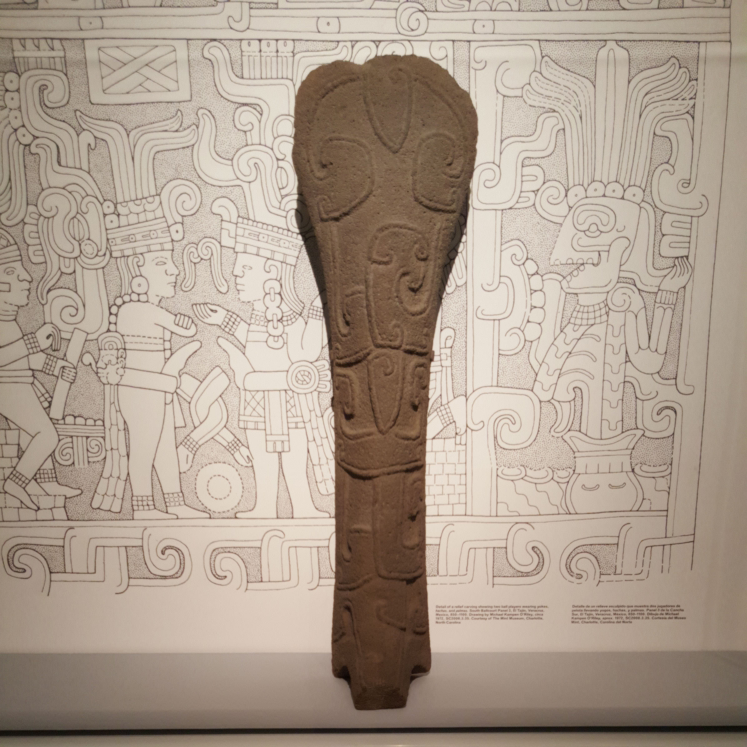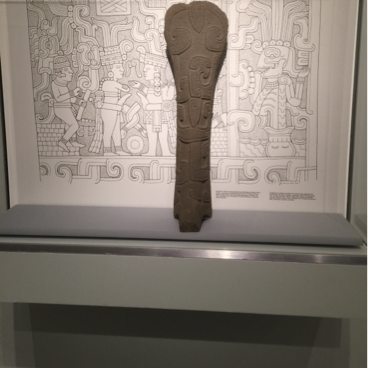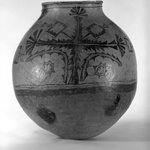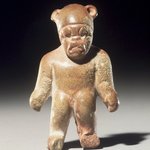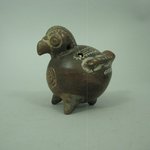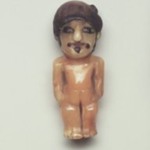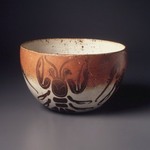

Totonac. Palma, 700–900. Basalt stone, 30 x 9 1/2 x 6 1/4 in. (76.2 x 24.1 x 15.9 cm). Brooklyn Museum, By exchange, 59.237.7. Creative Commons-BY (Photo: Brooklyn Museum, 59.237.7.jpg)
Palma
Arts of the Americas
Like hachas, palmas (literally, “palm branches”) were worn as appendages on the front of ballgame belts. The sinuously carved scroll designs on this example may signify blood, and therefore sacrifice.
Al igual que las hachas, las palmas (por su semejanza a hojas de palma) se usaban como apéndices al frente de los cinturones del juego de pelota. Los diseños de volutas grabados en este ejemplo pueden significar sangre, y por lo tanto sacrificio.
Al igual que las hachas, las palmas (por su semejanza a hojas de palma) se usaban como apéndices al frente de los cinturones del juego de pelota. Los diseños de volutas grabados en este ejemplo pueden significar sangre, y por lo tanto sacrificio.
CULTURE
Totonac
MEDIUM
Basalt stone
DATES
700–900
PERIOD
Late Classic Period
DIMENSIONS
30 x 9 1/2 x 6 1/4 in. (76.2 x 24.1 x 15.9 cm) (show scale)



COLLECTIONS
Arts of the Americas
ACCESSION NUMBER
59.237.7
CREDIT LINE
By exchange
CATALOGUE DESCRIPTION
Palm-shaped stone sculpture decorated with carved scroll designs and representing a decorative element that was worn on the front of ball game belts.
Condition: good.
EXHIBITIONS
MUSEUM LOCATION
This item is not on view
CAPTION
Totonac. Palma, 700–900. Basalt stone, 30 x 9 1/2 x 6 1/4 in. (76.2 x 24.1 x 15.9 cm). Brooklyn Museum, By exchange, 59.237.7. Creative Commons-BY (Photo: Brooklyn Museum, 59.237.7.jpg)
IMAGE
overall, 59.237.7.jpg. Brooklyn Museum photograph
"CUR" at the beginning of an image file name means that the image was created by a curatorial staff member. These study images may be digital point-and-shoot photographs, when we don\'t yet have high-quality studio photography, or they may be scans of older negatives, slides, or photographic prints, providing historical documentation of the object.
RIGHTS STATEMENT
Creative Commons-BY
You may download and use Brooklyn Museum images of this three-dimensional work in accordance with a Creative Commons license. Fair use, as understood under the United States Copyright Act, may also apply.
Please include caption information from this page and credit the Brooklyn Museum. If you need a high resolution file, please fill out our online application form (charges apply).
For further information about copyright, we recommend resources at the United States Library of Congress, Cornell University, Copyright and Cultural Institutions: Guidelines for U.S. Libraries, Archives, and Museums, and Copyright Watch.
For more information about the Museum's rights project, including how rights types are assigned, please see our blog posts on copyright.
If you have any information regarding this work and rights to it, please contact copyright@brooklynmuseum.org.
RECORD COMPLETENESS
Not every record you will find here is complete. More information is available for some works than for others, and some entries have been updated more recently. Records are frequently reviewed and revised, and we welcome any additional information you might have.




